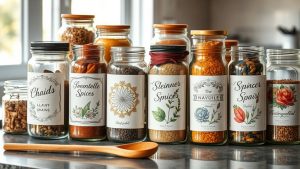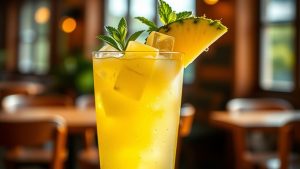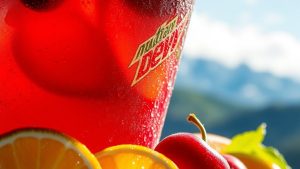
The flavor of blue raspberry is a vibrant mix of sweet and sour, marked by a distinctive tartness that's stronger than regular raspberry. You'll notice hints of pineapple or citrus that add depth and complexity. This flavor varies in intensity depending on the recipe, so it's essential to check labels for specific profiles. The uniqueness of blue raspberry isn't just in taste; it carries a rich history and cultural significance that's worth exploring further.
The flavor of blue raspberry stands out as a vibrant and intriguing profile in the world of artificial flavors. This flavor combines sweet and sour notes, delivering a tangy taste experience that can pique your interest. Unlike traditional raspberry flavors, blue raspberry typically exhibits a greater tartness, contributing to its unique appeal. The synthetic creation of this flavor means it possesses distinctive characteristics—its tartness and sweetness are crafted to create a memorable profile that differentiates it from conventional berry flavors.
Blue raspberry captivates with its vibrant blend of sweet and sour notes, offering a uniquely tart flavor experience unlike traditional berries.
When you taste blue raspberry, you might notice hints of pineapple or citrus, which further enrich its complexity. The flavor's uniqueness is partly due to the varying recipes used by different brands, each affecting the degree of sourness and sweetness experienced. As you explore the market, you'll find that this variability can result in surprising differences from one product to another, making it essential to read labels if you're seeking a specific flavor intensity.
Historically, blue raspberry emerged in the mid-20th century as a clever way to distinguish itself from the ubiquitous red fruit flavors like cherry and strawberry. The choice of blue was strategic, intended to avoid any confusion and enhance brand recognition. As the Food and Drug Administration (FDA) banned certain red dyes, the vibrant blue color gained popularity, becoming a cornerstone of competitive marketing strategies. This evolution of synthetic flavors reflects a broader trend in branding, where uniqueness is essential for market positioning.
In terms of chemical composition, blue raspberry flavorings often blend natural and artificial ingredients, including food-grade dyes like Brilliant Blue FCF to achieve that eye-catching hue. Common base ingredients such as propylene glycol and glycerin serve as carriers for the flavor, while many formulations boast the absence of added preservatives. This makes blue raspberry flavorings appealing for those seeking dietary compatibility, as they're often vegan and suitable for diabetics. Additionally, these flavorings are zero calories and contain no added sweeteners.
The widespread use of blue raspberry spans various products, from candies like Jolly Ranchers to beverages such as Icees and energy drinks. In fact, millions of blue raspberry Icees are consumed annually in the United States, signaling its lasting popularity. This flavor has become a top choice in shaved ice and frozen treats, attracting consumers of all ages with its vibrant color and bold taste. Its iconic status in American desserts underscores its cultural significance.
Blue raspberry hasn't only driven industry innovation but also fostered consumer engagement through memorable sensory experiences. The sustained popularity of this flavor reflects a market preference for novelty and variety, helping manufacturers differentiate their products visually and tastewise. As a trendsetter in flavors, blue raspberry continues to exert influence within the flavor industry, evolving alongside consumer preferences and cultural tastes. Its distinct profile encapsulates a blend of creativity and marketing savvy that keeps it relevant in today's ever-changing culinary landscape.
Conclusion
In the vibrant world of flavors, blue raspberry stands out with its unique allure. Imagine biting into a juicy berry, where tartness dances with a hint of sweetness, evoking memories of carefree summer days. Its striking blue hue invites curiosity, while its taste is a blend of artificial and natural notes, reminiscent of sweet-tart candies and invigorating slushies. This flavor captures the essence of nostalgia, leaving a lingering sweetness that beckons you for just one more taste.



